Blogging Sax Rohmer’s The Yellow Claw – Part Four
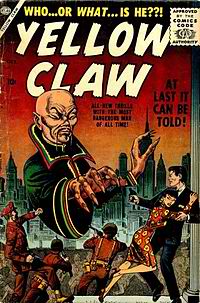
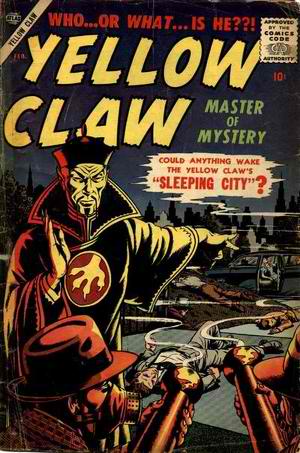 Sax Rohmer’s The Yellow Claw was originally serialized in five installments in Lippincott’s from February through June 1915. The serial was subsequently published in book form later that same year by Methuen Press in the UK and McBride & Nast in the US. The novel chooses to divide the story into four sections. This week, we examine the fourth and final part.
Sax Rohmer’s The Yellow Claw was originally serialized in five installments in Lippincott’s from February through June 1915. The serial was subsequently published in book form later that same year by Methuen Press in the UK and McBride & Nast in the US. The novel chooses to divide the story into four sections. This week, we examine the fourth and final part.
Rohmer really delivers with the final section of the novel with the development of the Eurasian femme fatale, Mahara who was previously referred to only under the mysterious moniker of Our Lady of the Poppies. Mahara becomes a flesh and blood character fiercely jealous to think that her lover, Gianopolis has been thinking of leaving her for another. The object of his affections is Helen Cumberley, Henry Leroux’s neighbor who despises Gianapolis as much as she pines for the unhappy thriller writer. Such a tangled web of unrequited love is uncommon for Rohmer, but it added to the novel’s appeal in its day and is surely one of the reasons that Stoll chose it as the first of his works to bring to the silver screen.
The narrative then switches to Gaston Max in the observation chamber of the opium den. The famous French detective feigns smoking opium, but only exhales through the pipe. Faking a drug-induced stupor, Max waits while Ho-Pin enters the room to check on him and is then startled to discover that upon his exit, Mahara has entered. Rohmer relished creating memorable femme fatales and Mahara seems to have been his first notable accomplishment with such a character. The Eurasian temptress passionately kisses the supposedly unconscious Max while lying upon him and cooing to him how she is going to enter his dreams. The image of a man forced to feign unconsciousness while a seductive female grinds into him is certainly powerful and far from the norm for fiction in 1915.
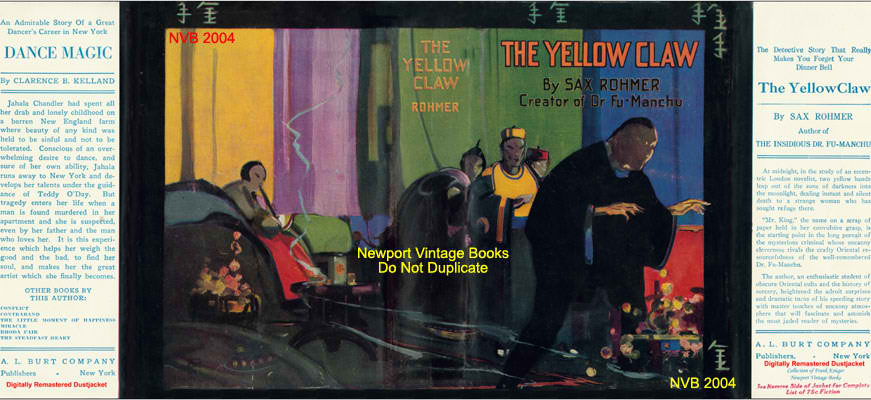
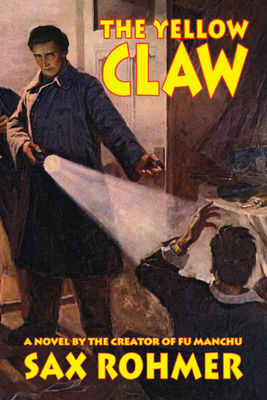 Relieved when Mahara finally departs, Max is thwarted from investigating the chamber when he is assaulted by an irresistible telepathic presence that he is shocked to recognize as Mr. King. This is the first time that Rohmer has portrayed his unseen criminal mastermind as possessing sufficient attritbutes to rival the formidable figure of Dr. Fu Manchu. Thus Gaston Max passes a sleepless night and is relieved when the Egyptian butler, Said arrives in the morning to rouse him and bring him his tea. Said is soon relieved by Soames who bathes and shaves Max prior to his departure. Poor Soames is badly shaken when the Frenchman unexpectedly asks him if he would like to earn a hundred pounds or so by agreeing to meet him at a place and time of the valet’s choosing. Max follows the queer offer by noting that very soon Soames will find himself unemployed. The valet is terrified of being overheard in the observation chamber as much as he is of the threat of a pending police raid. Gaston Max makes a dignified departure, chatting amiably with the very pleasant Mr. Gianapolis who seems pleased with his new customer.
Relieved when Mahara finally departs, Max is thwarted from investigating the chamber when he is assaulted by an irresistible telepathic presence that he is shocked to recognize as Mr. King. This is the first time that Rohmer has portrayed his unseen criminal mastermind as possessing sufficient attritbutes to rival the formidable figure of Dr. Fu Manchu. Thus Gaston Max passes a sleepless night and is relieved when the Egyptian butler, Said arrives in the morning to rouse him and bring him his tea. Said is soon relieved by Soames who bathes and shaves Max prior to his departure. Poor Soames is badly shaken when the Frenchman unexpectedly asks him if he would like to earn a hundred pounds or so by agreeing to meet him at a place and time of the valet’s choosing. Max follows the queer offer by noting that very soon Soames will find himself unemployed. The valet is terrified of being overheard in the observation chamber as much as he is of the threat of a pending police raid. Gaston Max makes a dignified departure, chatting amiably with the very pleasant Mr. Gianapolis who seems pleased with his new customer.
Later that morning, Max arrives at Scotland Yard where Inspector Dunbar is dumbfounded to learn that the Frenchman has located Soames and seeks to plan a raid on the opium den. The narrative then switches to Gianapolis’ doomed attempts to woo Helen Cumberley. Of course, part of his pursuit of the desirable but virtuous heroine is to enmesh her in the snares of opium. Despite the repulsion she feels for the Greek, Helen follows him in the hopes of helping clear her beloved Henry Leroux of suspicion of murder only to find herself captured by the jealous Mahara who conspires with Said to dispose of the English girl without Gianapolis’ knowledge.
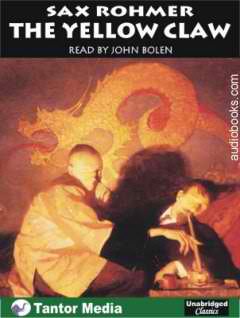
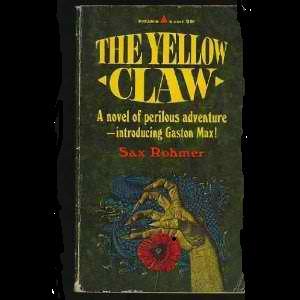 Dr. Cumberley, Leroux’s physician neighbor and Helen’s father, comes to Inspector Dunbar in a panic over his daughter’s disappearance. Gaston Max does his best to reassure the troubled man that it is imperative the police raid the opium den at the right time or else he will never see his missing daughter alive again. From here the scene shifts back to poor Soames who carefully prepares for his meeting with Max in the belief that he has at least been granted an opportunity to cooperate with the authorities before the establishment is shut down. Just as he makes his departure he comes face to face for the first and last time with the mysterious Mr. King who promptly sets upon him and strangles the poor man as punishment for his betrayal and deception.
Dr. Cumberley, Leroux’s physician neighbor and Helen’s father, comes to Inspector Dunbar in a panic over his daughter’s disappearance. Gaston Max does his best to reassure the troubled man that it is imperative the police raid the opium den at the right time or else he will never see his missing daughter alive again. From here the scene shifts back to poor Soames who carefully prepares for his meeting with Max in the belief that he has at least been granted an opportunity to cooperate with the authorities before the establishment is shut down. Just as he makes his departure he comes face to face for the first and last time with the mysterious Mr. King who promptly sets upon him and strangles the poor man as punishment for his betrayal and deception.
The story careens to a climax at a frantic pace (as is often the case in Rohmer’s works). Gaston Max infiltrates the opium den and manages to rescue poor Helen Cumberley in the nick of time. Mahara was about to stab her death when Max bursts in to discover the Eurasian and Gianapolis locked in a life and death struggle. Mahara dies a victim of the knife with which she intended to murder her unwitting rival. While poor Gianapolis redeems himself with a final selfless act, expiring from stab wounds received from his spurned lover while calling upon God to forgive him for his many sins.
Inspector Dunbar and his men raid the establishment at last, but Mr. King and Ho-Pin have made their escape with the other employees via riverboat on the Thames. A fast-paced pursuit on water follows, but surprisingly Rohmer allows his villains to outdistance the police and make good their escape. Mira Leroux is found in the establishment dying from her drug addiction. While breathing her last in the hospital, she gives her blessing for Helen and her husband to unite after her death. Gaston Max and Inspector Dunbar try to question her as to Mr. King’s identity, but just as she is about to reveal the truth she expires.
Some have suggested that it was Rohmer’s intent to suggest that Mr. King was in fact Dr. Fu Manchu, but the book is such a departure from his famous series moving as it does away from the pulp-style thrills of the Devil Doctor’s exploits to something closer to a traditional mystery with a firmer grip on reality than the delirious paranoia of the Fu Manchu books. There is also the fact that Dr. Fu Manchu never strangles anyone and that seems to be Mr. King, the Yellow Claw’s trademark. What does seem likely is that Rohmer hoped this more realistic Yellow Peril thriller would prove popular enough to produce sequels. He would bring Gaston Max and Inspector Dunbar back for another Yellow Peril thriller, but it would be one that was much closer in feel to the Fu Manchu series than The Yellow Claw. Mr. King himself would make one more appearance in print, re-imagined in an entirely different light in Rohmer’s 1932 novel, Yu’an Hee See Laughs. Rohmer once again hoped to create a second Oriental crime series with this book, but sales proved disappointing. Still in 1915, The Yellow Claw made quite a splash on the bestseller list and has earned a deserved place among Rohmer’s most influential works in its day.
William Patrick Maynard was authorized to continue Sax Rohmer’s Fu Manchu thrillers beginning with The Terror of Fu Manchu (2009; Black Coat Press). A sequel, The Destiny of Fu Manchu was published April 2 by Black Coat Press. Also forthcoming is a collection of short stories featuring an original Edwardian detective, The Occult Case Book of Shankar Hardwicke and an original hardboiled detective novel, Lawhead. To see additional articles by William, visit his blog at SetiSays.blogspot.com